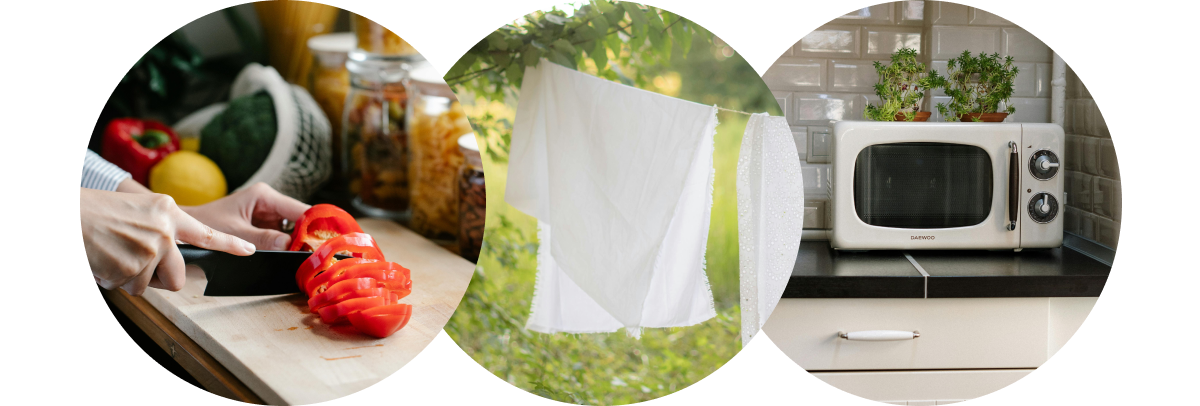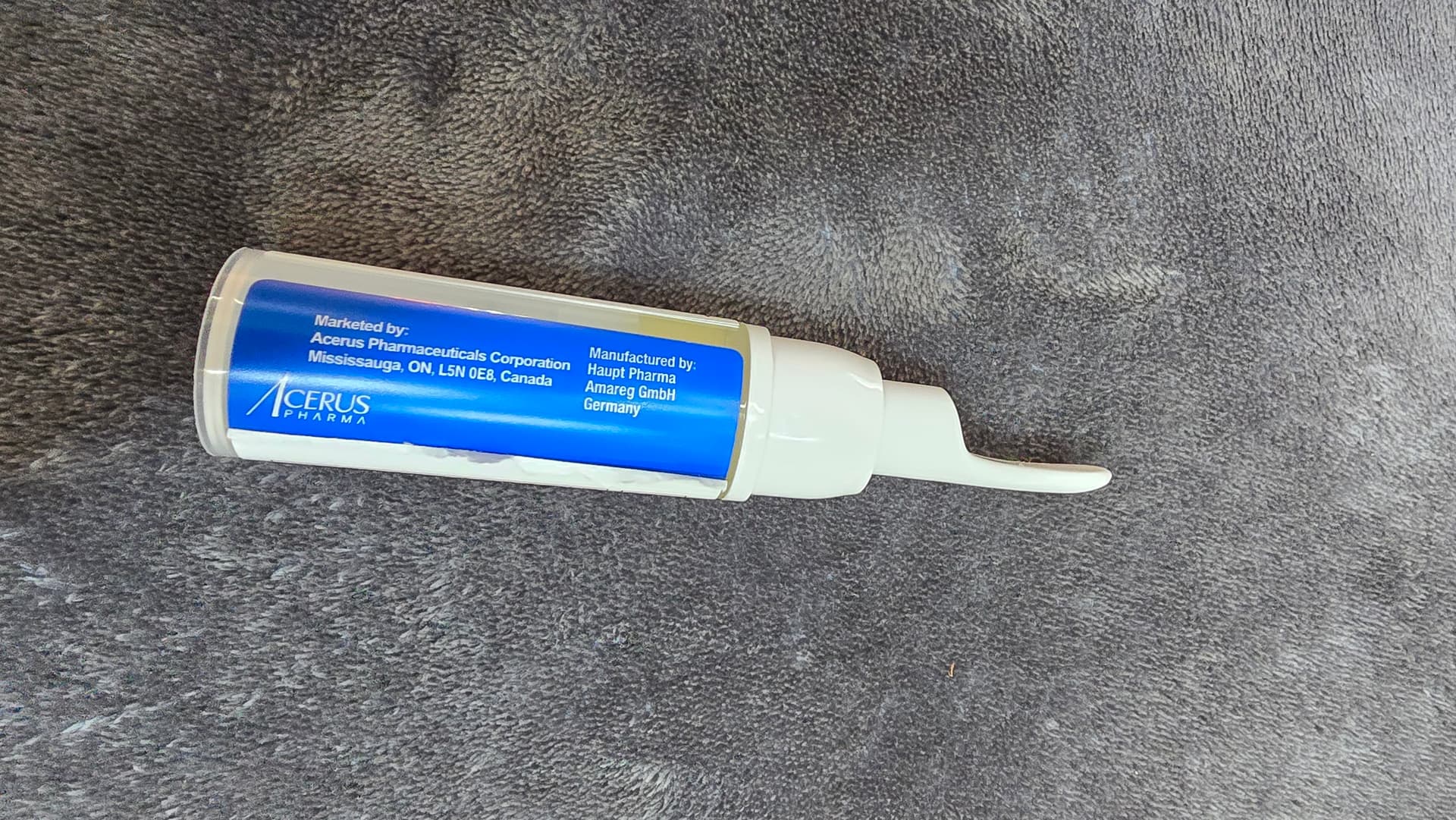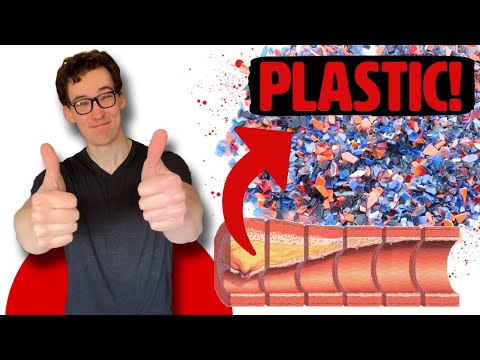From Tally Health, but the information seems to be supported by research:
Microplastics and your health
Microplastics can enter our body through inhalation, ingestion, or our skin and have been found in just about every organ as well as breast milk and placentas [4, 5, 6]. While we don’t know the full extent of microplastics’ impact on our health, early research has already shown several associated adverse effects:
Gut dysbiosis: Microplastics may change the balance between harmful and healthy bacteria, which alters the gut microbiome and can lead to abdominal pain, bloating, and inflammation [7, 8]. Microplastics are also vectors for the accumulation of heavy metals, which can lead to further gastrointestinal complaints, including nausea and vomiting [9].
Cardiovascular problems: While studies that reveal the impact that microplastics can have on heart health are limited, one recent study found that those with plaque in their carotid arteries who also had detectable levels of microplastics or nanoplastics (MNPs) in their bodies had a higher risk of heart attack, stroke, or death from any cause at the 34-month follow-up than those who did not have any detectable MNPs [10].
Respiratory issues: Since microplastics and nanoplastics can become lodged in the airways when inhaled, it’s not surprising that this is associated with shortness of breath, wheezing and even mitochondrial damage of respiratory cells [11, 4].
Hormonal disruption: Both microplastics and nanoplastics have been shown to have adverse effects on the endocrine gland, interfering with hormones and leading to oxidative stress, reproductive toxicity, and decreased sperm count. Microplastics also directly affect the thyroid, ovaries, and testes, which may impact fertility [12].
Immune dysfunction: While we don’t know exactly how microplastics affect our immune system, one study found that macrophages (a type of white blood cell) that engulfed microplastics didn’t function as well, which could mean that these tiny plastics could negatively impact how our immune system fights infection [13].
Cancer: It’s unclear how long microplastics linger in the body, but one recent study found that microplastics may get passed down from one cell to the next when they divide, which may also contribute to the spread of cancer [14].
The long-term effects of microplastics are still unknown, but studies on humans and animals have shown that microplastics can lead to DNA damage, inflammation, mitochondrial dysfunction, and gut dysbiosis—four hallmarks of aging—as well as cell death, oxidative stress, and the accumulation of reactive oxygen species (ROS), which can lead to further cellular and DNA damage [15, 16, 17] and impact overall healthspan and longevity.

How to reduce microplastic exposure
The challenge with microplastics is that it’s nearly impossible to avoid them. Instead, let’s focus our attention on science-backed ways to reduce exposure:
 Don’t microwave plastic: Microwaving plastic releases billions of microplastics and nanoplastics [18]. Even if the plastic container or bottle says it’s microwave-safe, this simply means that it won’t explode or melt when microwaved. However, it can still leach toxic chemicals into the air or your food. Replace plastic storage containers with glass or simply reheat food on a plate or in a bowl.
Don’t microwave plastic: Microwaving plastic releases billions of microplastics and nanoplastics [18]. Even if the plastic container or bottle says it’s microwave-safe, this simply means that it won’t explode or melt when microwaved. However, it can still leach toxic chemicals into the air or your food. Replace plastic storage containers with glass or simply reheat food on a plate or in a bowl.
 Avoid single-use plastics: Everything from storage bags and water bottles to disposable utensils breaks down, producing secondary microplastics that can harm our environment and, in return, further impact our health by contaminating the air or our drinking water. You can reduce your dependency on single-use plastics by carrying a reusable water bottle, swapping paper for plastic bags, and bringing fabric bags to the grocery store.
Avoid single-use plastics: Everything from storage bags and water bottles to disposable utensils breaks down, producing secondary microplastics that can harm our environment and, in return, further impact our health by contaminating the air or our drinking water. You can reduce your dependency on single-use plastics by carrying a reusable water bottle, swapping paper for plastic bags, and bringing fabric bags to the grocery store.
 Skip fast food: Phthalates and other toxic chemicals that leach out of microplastics were found in higher levels in pre-made and fast food compared to food cooked at home [19, 20]. This could be because workers wear vinyl gloves (which are made from various microplastics, including BPA) to prepare the food. Those who ate more ultra-processed foods were also more likely to have higher phthalate levels in their urine [21].
Skip fast food: Phthalates and other toxic chemicals that leach out of microplastics were found in higher levels in pre-made and fast food compared to food cooked at home [19, 20]. This could be because workers wear vinyl gloves (which are made from various microplastics, including BPA) to prepare the food. Those who ate more ultra-processed foods were also more likely to have higher phthalate levels in their urine [21].
 Swap plastic cutting boards for wood or stainless steel: Polypropylene and polyethylene-based cutting boards can also be major sources of microplastics in foods, exposing people to anywhere from 7-50 grams per year [22]. Replace plastic cutting boards with wood or stainless steel alternatives.
Swap plastic cutting boards for wood or stainless steel: Polypropylene and polyethylene-based cutting boards can also be major sources of microplastics in foods, exposing people to anywhere from 7-50 grams per year [22]. Replace plastic cutting boards with wood or stainless steel alternatives.
 Say “no” to paper receipts: Almost 80% of paper receipts from large US retailers contain bisphenol S (BPS)—a chemical used in the production of microplastics—which has been shown to disrupt hormones and increase the risk of breast cancer [23]. BPS can enter the bloodstream by penetrating the skin [24]. Studies have also found that receipts contain anywhere from 250-1,000 times greater amounts of BPA than canned food [25]. While BPA levels in receipts have decreased slightly over the last few years [26], researchers report that BPA is often replaced with bisphenol S (BPS), which may also cause hormonal disruption and obesogenic effects [23]. Consider playing it safe and avoiding paper receipts altogether, or opt for a digital receipt when offered.
Say “no” to paper receipts: Almost 80% of paper receipts from large US retailers contain bisphenol S (BPS)—a chemical used in the production of microplastics—which has been shown to disrupt hormones and increase the risk of breast cancer [23]. BPS can enter the bloodstream by penetrating the skin [24]. Studies have also found that receipts contain anywhere from 250-1,000 times greater amounts of BPA than canned food [25]. While BPA levels in receipts have decreased slightly over the last few years [26], researchers report that BPA is often replaced with bisphenol S (BPS), which may also cause hormonal disruption and obesogenic effects [23]. Consider playing it safe and avoiding paper receipts altogether, or opt for a digital receipt when offered.
 Choose natural clothing materials: We release microplastics into the air whenever we wash or wear (or even toss out) textiles made from synthetic fibers (e.g. polyester). When possible, opt for more natural fibers like cotton. While natural materials will still produce some microplastics within their lint, the lint is too large to release into the air.
Choose natural clothing materials: We release microplastics into the air whenever we wash or wear (or even toss out) textiles made from synthetic fibers (e.g. polyester). When possible, opt for more natural fibers like cotton. While natural materials will still produce some microplastics within their lint, the lint is too large to release into the air.
 Air dry clothes: While not always feasible or convenient, air drying clothes whenever possible can help reduce microplastic exposure both within the home and the environment. Studies have shown that dryers are significant contributors to environmental microplastics—even more so than our washing machines [27]. If it’s a nice day, consider hanging clothes out on the line to dry, or at the very least, let polyester and synthetic fibers dry naturally.
Air dry clothes: While not always feasible or convenient, air drying clothes whenever possible can help reduce microplastic exposure both within the home and the environment. Studies have shown that dryers are significant contributors to environmental microplastics—even more so than our washing machines [27]. If it’s a nice day, consider hanging clothes out on the line to dry, or at the very least, let polyester and synthetic fibers dry naturally.
 Vacuum regularly: Ever notice the twinkling dust left behind after fluffing a pillow or beating a couch cushion? These dust bunnies may also contain microplastics, which is why vacuuming regularly, especially if you have carpeting, can reduce the accumulation and spread of these particles.
Vacuum regularly: Ever notice the twinkling dust left behind after fluffing a pillow or beating a couch cushion? These dust bunnies may also contain microplastics, which is why vacuuming regularly, especially if you have carpeting, can reduce the accumulation and spread of these particles.

Discovering the hidden effects of microplastics can be daunting, but knowledge is the key to empowerment, not fear. At Tally Health, we’re committed to providing you with evidence-based strategies to enhance your well-being. If you’re looking to further improve your lifestyle and environment to slow how you age, a Tally Health Membership can provide more personalized DNA methylation-driven insights and recommendations to help you live healthier, longer.
I Want to Age Differently
Citations
[1] Pletz, M. (2022). Ingested microplastics: Do humans eat one credit card per week? Journal of Hazardous Materials Letters, 3, 100071. Redirecting
[2] Napper, I. E., Davies, B. F., Clifford, H., Elvin, S., Koldewey, H. J., Mayewski, P. A., Miner, K. R., Potocki, M., Elmore, A. C., Gajurel, A. P., & Thompson, R. C. (2020). Reaching New Heights in Plastic Pollution—Preliminary Findings of Microplastics on Mount Everest. One Earth, 3(5), 621-630. Redirecting
[3] Khadka, N. S. (2022, June 8). Microplastics found in fresh Antarctic snow. BBC News. Retrieved from Microplastics found in fresh Antarctic snow
[4] Lin, S., Zhang, H., Wang, C., Su, L., Song, Y., Wu, P., Yang, Z., Wong, H., Cai, Z., & Zheng, C. (2022). Metabolomics Reveal Nanoplastic-Induced Mitochondrial Damage in Human Liver and Lung Cells. Environmental Science & Technology, 56(17), 12483-12493. https://doi.org/10.1021/acs.est.2c03980
[5] Ragusa, A., Notarstefano, V., Svelato, A., Belloni, A., Gioacchini, G., Blondeel, C., Zucchelli, E., Luca, C. D., Gulotta, A., Carnevali, O., & Giorgini, E. (2022). Raman Microspectroscopy Detection and Characterisation of Microplastics in Human Breastmilk. Polymers, 14(13). Polymers | Free Full-Text | Raman Microspectroscopy Detection and Characterisation of Microplastics in Human Breastmilk
[6] Ragusa A, Svelato A, Santacroce C, Catalano P, Notarstefano V, Carnevali O, Papa F, Rongioletti MCA, Baiocco F, Draghi S, D’Amore E, Rinaldo D, Matta M, Giorgini E. Plasticenta: First evidence of microplastics in human placenta. Environ Int. 2021 Jan;146:106274. doi: 10.1016/j.envint.2020.106274. Epub 2020 Dec 2. PMID: 33395930.
[7] Bouwmeester H, Hollman PC, Peters RJ. Potential Health Impact of Environmentally Released Micro- and Nanoplastics in the Human Food Production Chain: Experiences from Nanotoxicology. Environ Sci Technol. 2015 Aug 4;49(15):8932-47. doi: 10.1021/acs.est.5b01090. Epub 2015 Jul 15. PMID: 26130306.
[8] Jin Y, Lu L, Tu W, Luo T, Fu Z. Impacts of polystyrene microplastic on the gut barrier, microbiota and metabolism of mice. Sci Total Environ. 2019 Feb 1;649:308-317. doi: 10.1016/j.scitotenv.2018.08.353. Epub 2018 Aug 28. PMID: 30176444.
[9] Abbasi, S., Moore, F., & Keshavarzi, B. (2021). PET-microplastics as a vector for polycyclic aromatic hydrocarbons in a simulated plant rhizosphere zone. Environmental Technology & Innovation, 21, 101370. Redirecting
[10] Marfella R, Prattichizzo F, Sardu C, Fulgenzi G, Graciotti L, Spadoni T, D’Onofrio N, Scisciola L, La Grotta R, Frigé C, Pellegrini V, Municinò M, Siniscalchi M, Spinetti F, Vigliotti G, Vecchione C, Carrizzo A, Accarino G, Squillante A, Spaziano G, Mirra D, Esposito R, Altieri S, Falco G, Fenti A, Galoppo S, Canzano S, Sasso FC, Matacchione G, Olivieri F, Ferraraccio F, Panarese I, Paolisso P, Barbato E, Lubritto C, Balestrieri ML, Mauro C, Caballero AE, Rajagopalan S, Ceriello A, D’Agostino B, Iovino P, Paolisso G. Microplastics and Nanoplastics in Atheromas and Cardiovascular Events. N Engl J Med. 2024 Mar 7;390(10):900-910. doi: 10.1056/NEJMoa2309822. PMID: 38446676.
[11] Wright SL, Kelly FJ. Plastic and Human Health: A Micro Issue? Environ Sci Technol. 2017 Jun 20;51(12):6634-6647. doi: 10.1021/acs.est.7b00423. Epub 2017 Jun 7. PMID: 28531345.
[12] Ullah S, Ahmad S, Guo X, Ullah S, Ullah S, Nabi G, Wanghe K. A review of the endocrine disrupting effects of micro and nano plastic and their associated chemicals in mammals. Front Endocrinol (Lausanne). 2023 Jan 16;13:1084236. doi: 10.3389/fendo.2022.1084236. PMID: 36726457; PMCID: PMC9885170.
[13] Collin-Faure, V., Vitipon, M., Torres, A., Tanyeres, O., Dalzon, B., & Rabilloud, T. (2023). The internal dose makes the poison: Higher internalization of polystyrene particles induce increased perturbation of macrophages. Frontiers in Immunology, 14. https://doi.org/10.3389/fimmu.2023.1092743
[14] Brynzak-Schreiber, E., Schögl, E., Bapp, C., Cseh, K., Kopatz, V., Jakupec, M. A., Weber, A., Lange, T., Toca-Herrera, J. L., Del Favero, G., Wadsak, W., Kenner, L., & Pichler, V. (2024). Microplastics role in cell migration and distribution during cancer cell division. Chemosphere, 353, 141463. Redirecting
[15] Huang, R., & [Additional Authors]. (2022). The geno-toxicological impacts of microplastic (MP) exposure on health: mechanistic pathways and research trends from a Chinese perspective. Environmental Science: Processes & Impacts. Retrieved from The geno-toxicological impacts of microplastic (MP) exposure on health: mechanistic pathways and research trends from a Chinese perspective - Environmental Science: Processes & Impacts (RSC Publishing) DOI:10.1039/D2EM00301E
[16] Dutchen, S. (2023). Microplastics Everywhere. Harvard Medical School. Retrieved from Microplastics Everywhere | Harvard Medicine Magazine
[17] Lee, S. E., Yi, Y., Moon, S., Yoon, H., & Park, Y. S. (2022). Impact of Micro- and Nanoplastics on Mitochondria. Metabolites, 12(10). Metabolites | Free Full-Text | Impact of Micro- and Nanoplastics on Mitochondria
[18] Hussain, K. A., Romanova, S., Okur, I., Zhang, D., Kuebler, J., Huang, X., Wang, B., Fernandez-Ballester, L., Lu, Y., Schubert, M., & Li, Y. (2023). Assessing the Release of Microplastics and Nanoplastics from Plastic Containers and Reusable Food Pouches: Implications for Human Health. Environmental Science & Technology. https://doi.org/10.1021/acs.est.3c01942
[19] Varshavsky, J. R., Morello-Frosch, R., Woodruff, T. J., & Zota, A. R. (2018). Dietary sources of cumulative phthalates exposure among the U.S. General population in NHANES 2005–2014. Environment International, 115, 417-429. Redirecting
[20] Edwards, L., McCray, N. L., VanNoy, B. N., Yau, A., Geller, R. J., Adamkiewicz, G., & Zota, A. R. (2022). Phthalate and novel plasticizer concentrations in food items from U.S. Fast food chains: A preliminary analysis. Journal of Exposure Science & Environmental Epidemiology, 32(3), 366-373. Phthalate and novel plasticizer concentrations in food items from U.S. fast food chains: a preliminary analysis | Journal of Exposure Science & Environmental Epidemiology
[21] Buckley, J. P., Kim, H., Wong, E., & Rebholz, C. M. (2019). Ultra-processed food consumption and exposure to phthalates and bisphenols in the US National Health and Nutrition Examination Survey, 2013–2014. Environment International, 131, 105057. Redirecting
[22] Yadav H, Khan MRH, Quadir M, Rusch KA, Mondal PP, Orr M, Xu EG, Iskander SM. Cutting Boards: An Overlooked Source of Microplastics in Human Food? Environ Sci Technol. 2023 Jun 6;57(22):8225-8235. doi: 10.1021/acs.est.3c00924. Epub 2023 May 23. PMID: 37220346.
[23] Thoene, M., Dzika, E., Gonkowski, S., & Wojtkiewicz, J. (2020). Bisphenol S in Food Causes Hormonal and Obesogenic Effects Comparable to or Worse than Bisphenol A: A Literature Review. Nutrients, 12(2). Nutrients | Free Full-Text | Bisphenol S in Food Causes Hormonal and Obesogenic Effects Comparable to or Worse than Bisphenol A: A Literature Review
[24] Reale E, Vernez D, Hopf NB. Skin Absorption of Bisphenol A and Its Alternatives in Thermal Paper. Ann Work Expo Health. 2021 Mar 3;65(2):206-218. doi: 10.1093/annweh/wxaa095. PMID: 33313651.
[25] Schwartz, A. W., & Landrigan, P. J. (2012). Bisphenol A in Thermal Paper Receipts: An Opportunity for Evidence-Based Prevention. Environmental Health Perspectives, 120(1), a14. https://doi.org/10.1289/ehp.1104004
[26] The Ecology Center. (2023). Receipt Deceit 2023 Report Update. Retrieved from https://www.ecocenter.org/our-work/healthy-stuff-lab/receipt-deceit-2023-report-update
[27] Tao, D., Zhang, K., Xu, S., Lin, H., Liu, Y., Kang, J., Yim, T., Giesy, J. P., & Leung, K. M. Y. (2022). Microfibers Released into the Air from a Household Tumble Dryer. Environmental Science & Technology Letters, 9(2), 120-126. https://doi.org/10.1021/acs.estlett.1c00911

 Don’t microwave plastic: Microwaving plastic releases billions of microplastics and nanoplastics [18]. Even if the plastic container or bottle says it’s microwave-safe, this simply means that it won’t explode or melt when microwaved. However, it can still leach toxic chemicals into the air or your food. Replace plastic storage containers with glass or simply reheat food on a plate or in a bowl.
Don’t microwave plastic: Microwaving plastic releases billions of microplastics and nanoplastics [18]. Even if the plastic container or bottle says it’s microwave-safe, this simply means that it won’t explode or melt when microwaved. However, it can still leach toxic chemicals into the air or your food. Replace plastic storage containers with glass or simply reheat food on a plate or in a bowl. Avoid single-use plastics: Everything from storage bags and water bottles to disposable utensils breaks down, producing secondary microplastics that can harm our environment and, in return, further impact our health by contaminating the air or our drinking water. You can reduce your dependency on single-use plastics by carrying a reusable water bottle, swapping paper for plastic bags, and bringing fabric bags to the grocery store.
Avoid single-use plastics: Everything from storage bags and water bottles to disposable utensils breaks down, producing secondary microplastics that can harm our environment and, in return, further impact our health by contaminating the air or our drinking water. You can reduce your dependency on single-use plastics by carrying a reusable water bottle, swapping paper for plastic bags, and bringing fabric bags to the grocery store. Skip fast food: Phthalates and other toxic chemicals that leach out of microplastics were found in higher levels in pre-made and fast food compared to food cooked at home [19, 20]. This could be because workers wear vinyl gloves (which are made from various microplastics, including BPA) to prepare the food. Those who ate more ultra-processed foods were also more likely to have higher phthalate levels in their urine [21].
Skip fast food: Phthalates and other toxic chemicals that leach out of microplastics were found in higher levels in pre-made and fast food compared to food cooked at home [19, 20]. This could be because workers wear vinyl gloves (which are made from various microplastics, including BPA) to prepare the food. Those who ate more ultra-processed foods were also more likely to have higher phthalate levels in their urine [21]. Swap plastic cutting boards for wood or stainless steel: Polypropylene and polyethylene-based cutting boards can also be major sources of microplastics in foods, exposing people to anywhere from 7-50 grams per year [22]. Replace plastic cutting boards with wood or stainless steel alternatives.
Swap plastic cutting boards for wood or stainless steel: Polypropylene and polyethylene-based cutting boards can also be major sources of microplastics in foods, exposing people to anywhere from 7-50 grams per year [22]. Replace plastic cutting boards with wood or stainless steel alternatives. Say “no” to paper receipts: Almost 80% of paper receipts from large US retailers contain bisphenol S (BPS)—a chemical used in the production of microplastics—which has been shown to disrupt hormones and increase the risk of breast cancer [23]. BPS can enter the bloodstream by penetrating the skin [24]. Studies have also found that receipts contain anywhere from 250-1,000 times greater amounts of BPA than canned food [25]. While BPA levels in receipts have decreased slightly over the last few years [26], researchers report that BPA is often replaced with bisphenol S (BPS), which may also cause hormonal disruption and obesogenic effects [23]. Consider playing it safe and avoiding paper receipts altogether, or opt for a digital receipt when offered.
Say “no” to paper receipts: Almost 80% of paper receipts from large US retailers contain bisphenol S (BPS)—a chemical used in the production of microplastics—which has been shown to disrupt hormones and increase the risk of breast cancer [23]. BPS can enter the bloodstream by penetrating the skin [24]. Studies have also found that receipts contain anywhere from 250-1,000 times greater amounts of BPA than canned food [25]. While BPA levels in receipts have decreased slightly over the last few years [26], researchers report that BPA is often replaced with bisphenol S (BPS), which may also cause hormonal disruption and obesogenic effects [23]. Consider playing it safe and avoiding paper receipts altogether, or opt for a digital receipt when offered. Choose natural clothing materials: We release microplastics into the air whenever we wash or wear (or even toss out) textiles made from synthetic fibers (e.g. polyester). When possible, opt for more natural fibers like cotton. While natural materials will still produce some microplastics within their lint, the lint is too large to release into the air.
Choose natural clothing materials: We release microplastics into the air whenever we wash or wear (or even toss out) textiles made from synthetic fibers (e.g. polyester). When possible, opt for more natural fibers like cotton. While natural materials will still produce some microplastics within their lint, the lint is too large to release into the air. Air dry clothes: While not always feasible or convenient, air drying clothes whenever possible can help reduce microplastic exposure both within the home and the environment. Studies have shown that dryers are significant contributors to environmental microplastics—even more so than our washing machines [27]. If it’s a nice day, consider hanging clothes out on the line to dry, or at the very least, let polyester and synthetic fibers dry naturally.
Air dry clothes: While not always feasible or convenient, air drying clothes whenever possible can help reduce microplastic exposure both within the home and the environment. Studies have shown that dryers are significant contributors to environmental microplastics—even more so than our washing machines [27]. If it’s a nice day, consider hanging clothes out on the line to dry, or at the very least, let polyester and synthetic fibers dry naturally. Vacuum regularly: Ever notice the twinkling dust left behind after fluffing a pillow or beating a couch cushion? These dust bunnies may also contain microplastics, which is why vacuuming regularly, especially if you have carpeting, can reduce the accumulation and spread of these particles.
Vacuum regularly: Ever notice the twinkling dust left behind after fluffing a pillow or beating a couch cushion? These dust bunnies may also contain microplastics, which is why vacuuming regularly, especially if you have carpeting, can reduce the accumulation and spread of these particles.

